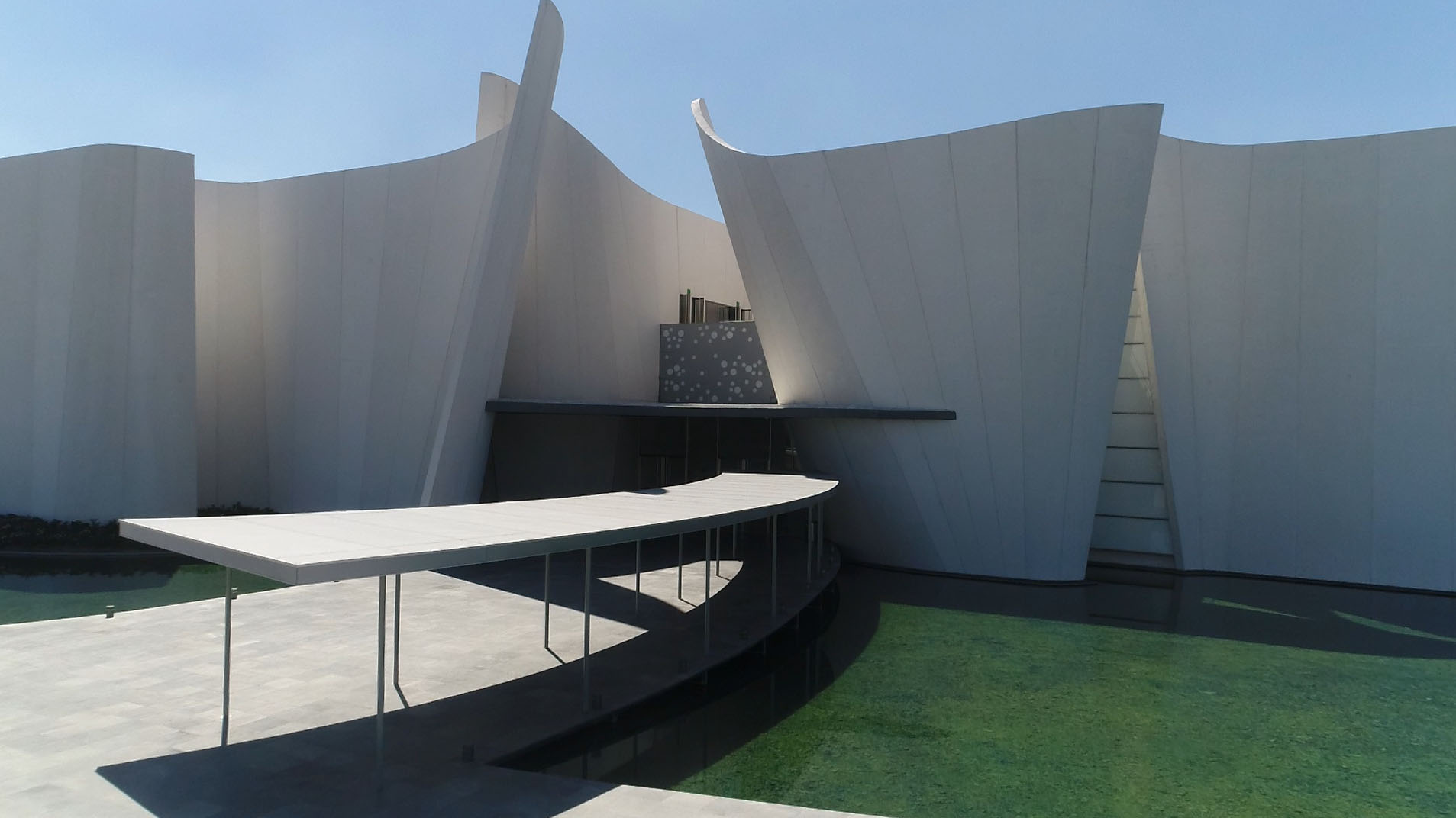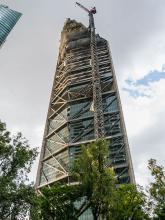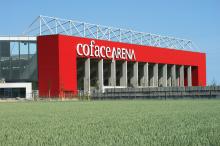
The work of the 2013 Pritzker Architecture Prize winner Toyo Ito, the museum’s design features 702 curved white concrete pieces between 18-25m high, comprised of 18,150m² divided into two levels.
The MIB is one of the country’s most important cultural centres.
“What the spectator can see of the museum are pieces made of a white concrete layer on the outside, a white concrete layer on the inside, and a hollow centre which was filled on site,” says Rafael Barona, architect at DANSTEK, the company responsible for the construction.
The prefabricated pieces enabled the curved form of each wall, while maintaining the highest quality finish. This technique helped to reduce the original execution time by 48%; eliminate the use of on-site frame cramps, and lower the consumption of white concrete by 40%, because the walls only required white concrete for their interior and exterior layers. The inside of the walls was cast with self-compacting grey concrete.
DANSTEK worked with Cemex to develop the concrete to fill each piece, which was poured at great heights to foster fluidity and avoid gaps.
“The concrete mix that we developed with Cemex worked perfectly and achieved total homogeneity. This was the first time that this type of concrete was utilized because we had never encountered a concrete interior which was also the exterior of the building,” says Barona.
The 702 pieces of the 54 walls of the museum were built with this mix. Their construction required the simultaneous use of ten cranes that enabled the completion of the work in a record time of 27 weeks. “The entire structure was created, solved, and completed in Mexico, with Japanese design, 100% Mexican execution, and top quality,” added Barona.
“In a little over a year, the museum has enjoyed approximately half a million visitors from Mexico and around the world, fulfilling our vision of enabling families to visit, reflect, and own this venue,” says Ambassador Jorge Alberto Lozaya, MIB’s director.







